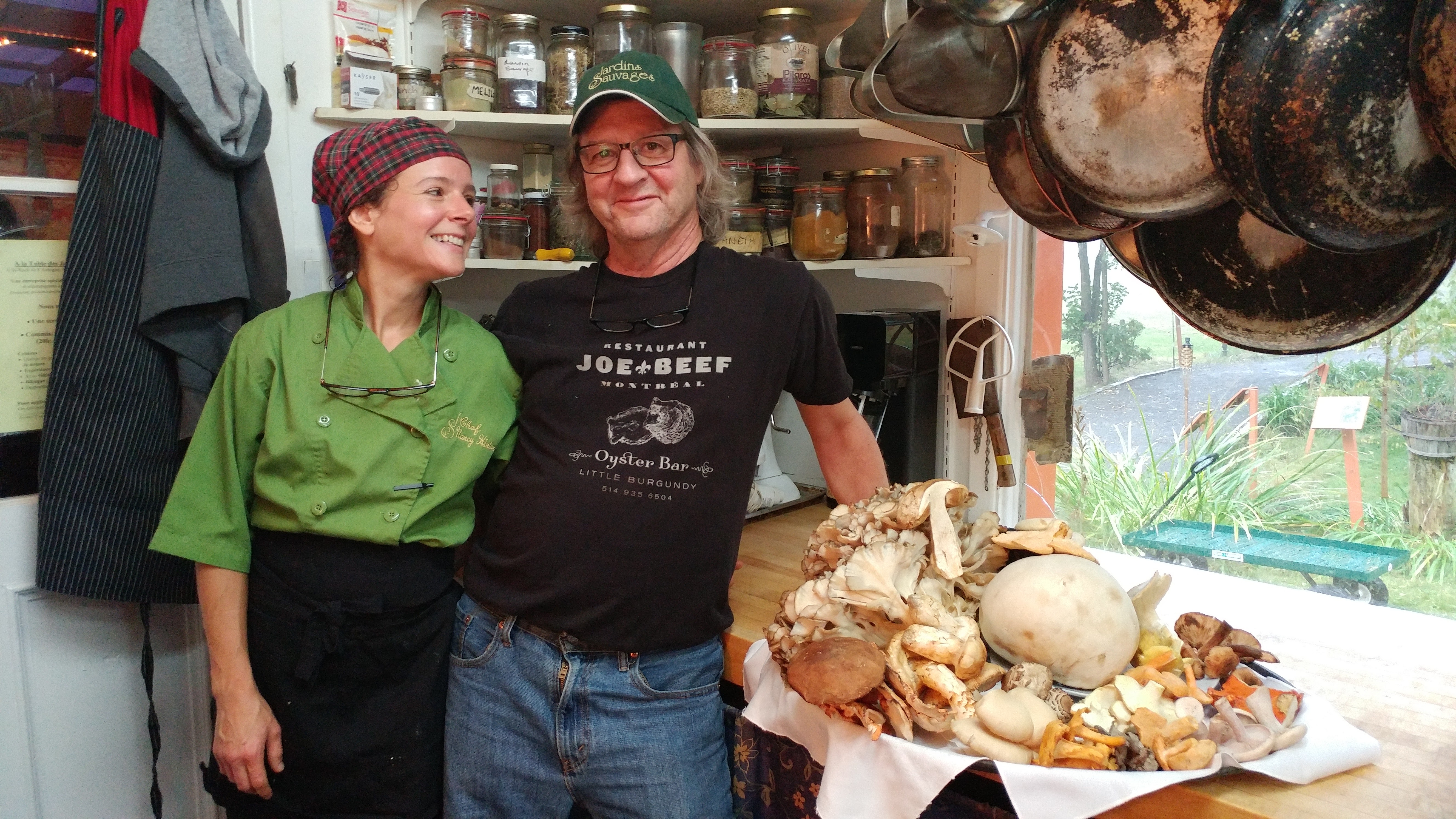Entries in Sauvage (2)
Têtes de Violon
Têtes de violon(Fiddleheads)- pur délice de printemps
Nancy Hinton, Les Jardins Sauvages

Et oui, c’est déjà bientôt ce temps de l’année! L’arrivée des têtes de violon est toujours un moment festif chez nous, vedette du printemps - notre premier légume vert de terroir, si nutritif et délicieux quand bien choisi et apprêté. Ce qui débute la saison de récoltes et de bien manger local plus facilement, yé.
La bonne nouvelle c’est qu’il ne faut pas avoir peur de ce bon comestible forestier! Malgré la mauvaise presse et controverse dans le passé. On dirait qu’on recommence à chaque année avec éducation face à de l’information confuse qui circule, quand ce n’est pas si compliqué. C’est juste une question de qualité, fraicheur et de cuisson. Les seuls cas de malaise documentés ont été dû à de la consommation crue et sources particulières/inconnues. François en cueille dans nos sites de façon durable sans probleme depuis tant d'années. (37 ans officiellement)
Les têtes de violon nous offre un cocktail impressionnant de nutriments comme les Vitamin A et C, des anti-oxydants et minéraux essentiels (le fer, calcium, magnésium, potassium, Cu et Ma), protéines et fibres.. Elles contiennent également une molécule qui peut être indigeste – le ptaquiloside, mais qui est soluble dans l’eau et dénaturé par la chaleur. Alors si lavées et cuites, il n’y a pas de soucis! Et vu qu’elles poussent au long des rivières, cela protège contre les bactéries aussi.
Aussi, la réalité c’est qu’il y a beaucoup de variabilité de qualité et de fraicheur sur le marché, incluant beaucoup de marché noir et de cueilleurs improvisés, opérant en dehors de chaine de réfrigération et normes d’hygiène et salubrité, sans traçabilité. Souvent ce qu’on trouve à l’épicerie par exemple est un lot qui a été dompé sur le marché à bas prix comme les commerçants préfèrent, parce que le cueilleur sans chambre froide et réseau veut s’en débarrasser. Un cueilleur/entreprise enregistrée avec des normes et couts d’opération ne peut pas compétitionner le marché noir sur le prix, mais certainement sur la qualité.
Bref, on a simplement à s’assurer d’une bonne source fraichement cueillie et bien entreposé, les laver et cuire dans beaucoup d’eau bouillante. Il ne faut pas les manger cru, c’est tout!
Cuisson : Avec une belle qualité de têtes de violon (comme les nôtres) et suffisamment d’eau dans le chaudron, 5 min dans l’eau bouillante c’est assez pour que les têtes soient cuites au centre et tendres... Avant des introduire à vos recettes. Fiche de cuisson sur notre site. https://jardinssauvages.com/guides-fiches-de-cuisson/
(L’histoire de cuisson à deux eaux est superflue à moins que vous ayez un tout petit chaudron ou une source inconnue ou vous êtes perfectionniste visant le maximum de couleur vert et contacte d’eau avec minimum cuisson, vraiment pas nécessaire pour la digestibilité ou la délicieusité). Il y a un temps qu’on le suggérait par précaution, mais suivant ma recherche et autant d’années d’expérience depuis, j’ai conclus que c’était bien ok de sauter cet étape.
On peut les manger froides en salade après une première cuisson, mais elles sont encore meilleur chaudes. De plus, on va souvent les mettre à la poêle après avec un peu de beurre monté (beurre + eau) et assaisonnements, alors une cuisson de plus... De toutes façons, elles sont meilleures un peu plus cuits qu’‘aldenté’.
Comme la plupart des légumes verts, elles aiment l’ail, et un peu de bon gras, par exemple, une bonne huile d’olive, noix ou de tournesol, le bacon, viande et umami, ainsi que les recettes asiatiques avec tamari et sésame, ou curry-coco. En omelette, pâtes, en accompagnement, on les utilise comme une asperge ou haricot vert.
Cueillette – astuces/ à quoi faire attention
Si on est assez chanceux d’en avoir sur notre terrain ou autre terrain privé avec permission, on peut les cueillir soi-même en faisant attention. Les têtes de violon poussent dans les lieux humides en forêt, aux bords de rivière et zones inondés. Fin avril début - mai au Québec. Il faut s’assurer de bien identifier l’espèce de fougère comestible (Matteuccia struthiopteris) car il y en a plusieurs, avec l’aide de personne expérimenté et livres de référence comme ‘Plantes Sauvages Comestibles’ de Fleurbec.
On les cueille à la main (sans couteau) quand juste sorti de terre (pas déroulé), et seulement 2-3 par plant; on laisse toujours plus qu’on cueille. Ensuite, il faut les laver pour enlever la pelure/les écailles brune à grande eau. Après, on les réfrigère jusqu’au moment de les cuisiner.
Idées - Recettes :
Notre façon préférée pour les têtes de violon est assez simple : Après la première cuisson à l’eau bouillante (5min), on les met à la poêle avec un peu de beurre/huile de choix, de l’ail et ‘épices à steak’; ensuite quelques gouttes de tamari, de sirop d’érable et de vinaigre de cidre. On les fait déguster comme ça, mais cette préparation fait un bel accompagnement pour poisson, viande, salade composé (style niçoise), pasta style primavera ou carbonara, pour garnir un poke bowl, etc...
Au resto, on les cuisine de plusières manieres selon le menu, et on fait toujours de la soupe verte, une chaudrée cremeuse avec bacon aussi. En saison, on fait nos reserves - en marinades et blanchies, congelées sous-vide pour l'hiver..
A la maison, on les aime bien en frittata, en wok de légumes et nouilles avec huile de sésame et chilli-crisp, ou en salade tiède. Je fais des vinaigrettes pour Jardin des Noix – ‘Europe’ (à l’huile de noyer noir) et ‘Asie’ (à l’huile de noisette), et les deux sont délicieuses sur les têtes de violon!
Une autre recette favorite s’agit d’oignons sués avec du lard/bacon, et un peu de bouillon/eau, sel & poivre (et bouquet garni typiquement Québécois avec laurier, thym ou sarriette & clou (ou épices à tourtière)), cuits doucement, assez longtemps. (Façon bas-du-fleuve)
Il y a plusieurs recettes sur note site. https://jardinssauvages.com/recettes/
Bon Appétit et Bon Printemps!
From Wild Booch back to Wild Shrooms
My new baby – ‘Wild Booch’ - Kombucha Sauvage
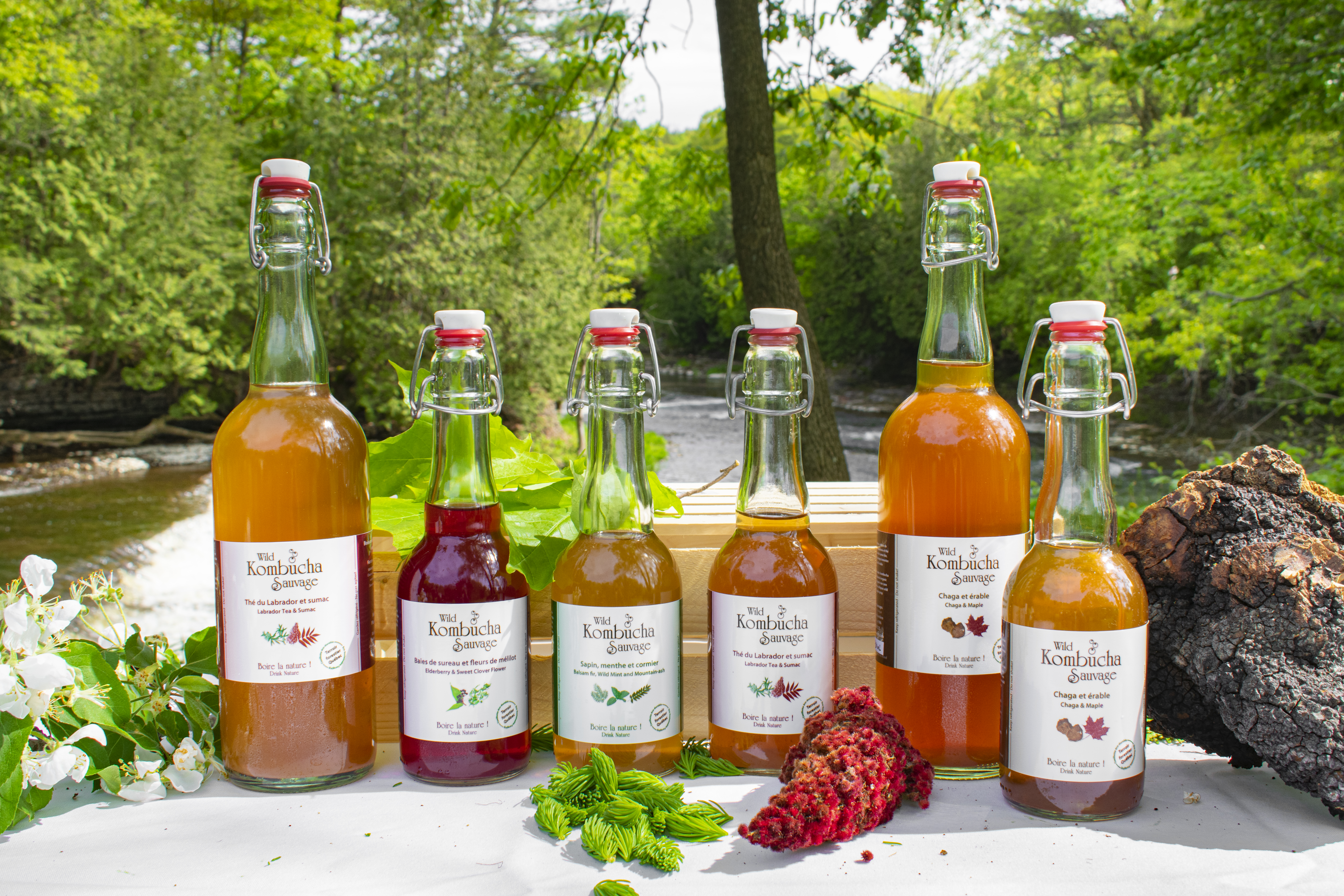
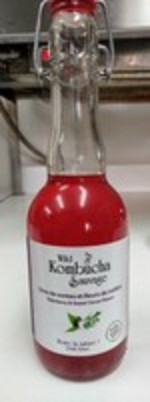 My sexy labels are thanks to Yves (Menu&Cie)
My sexy labels are thanks to Yves (Menu&Cie)
More than a year into this adventure now!
A curiosity turned hobby turned little side business..
It all started with ‘the sodas’ (Soda Sauvage) which I had been working on bringing to market for a couple of years since we began carbonating our maple sap in spring 2016 for fun. François liked it plain, but I wanted flavour! I got to playing around and finally called on Ryk, a soda enthusiast, who coached and lent me equipment for my first bottling. With some further research, trials and a few explosions later, I invested in the basics and got it down. Once my sumac maple sparkling water was set and adopted, it spawned a line of ‘sodas’ featuring clean and subtle flavours from the forest.
Then I caught the fermentation bug after taking a class for professionals with Sebastien Bureau (Mannanova), and began fermenting everything in sight. Scary looking (and smelling?!) experiments were bubbling all over the place between the restaurant and our house kitchen counter and cupboards, François found it frightful - until he was sold. Kombucha became a daily libation for both of us, as well as an amusing project for me – an open template for exploration.. As I have been cooking with all these local wild plants and mushrooms for so many years, it was only natural that François’ foraged treasures would end up in our glass as well! The Kombucha came to overshadow the sodas only because it happened to be trendy and more punchy, more market friendly in the moment.
(In case you’re not familiar with Kombucha, it is a naturally sparkling beverage made from fermented sweet tea that is refreshingly sour, and supposedly super good for you and your gut.) Look it up!
I just think it’s delicious, when well made.. Besides the composition of your mother (SCOBY), and kind of tea, ingredients, herbs and spices you use that go into it, not to mention the brewing temperature and method, there are many different styles. At Montreal’s Boochfest recently at Jarry Park, I tasted everything from sweet, commercial, ultra filtered carbonated ‘phony’ Kombucha to super pure, bland tonic, as well as super dry, overly aromatic concoctions and everything in between. Every aroma under the sun and a wide range of effervescence, on offer from big international companies to hyper-local artisans, all with a unique booch. And from observing customers, it became obvious that everyone seems to appreciate something different too.
Personally I favour a fermented product (so acidic) with minimum but some residual sugar to balance, with a real tasting flavour that is not overpowering. I find that almost every beverage on the market tastes artificial even if they claim to use ‘natural’ flavour; my pet peeve! Although there might be slightly more authenticity in the Kombucha world than with soft drinks or ‘waters’, marketing remains omnipresent and just as misleading as it goes mainstream, the bigger brands already in supermarkets..
I love my bubbles, but I stop them short a bit to have stability in the fridge since I don’t extreme filter out all the good stuff. At home, I often allow for a longer 2nd fermentation and even leave the fruit/herbs in, but not a good idea for business.
My four flavours offer up each a different personality: The Chaga-Maple is Soft and Easy, intriguing for the medicinal mushroom factor; Labrador Tea-Sumac is sharp, astringent and refreshing, my favourite but apparently the least so with customers beyond Booch old timers.
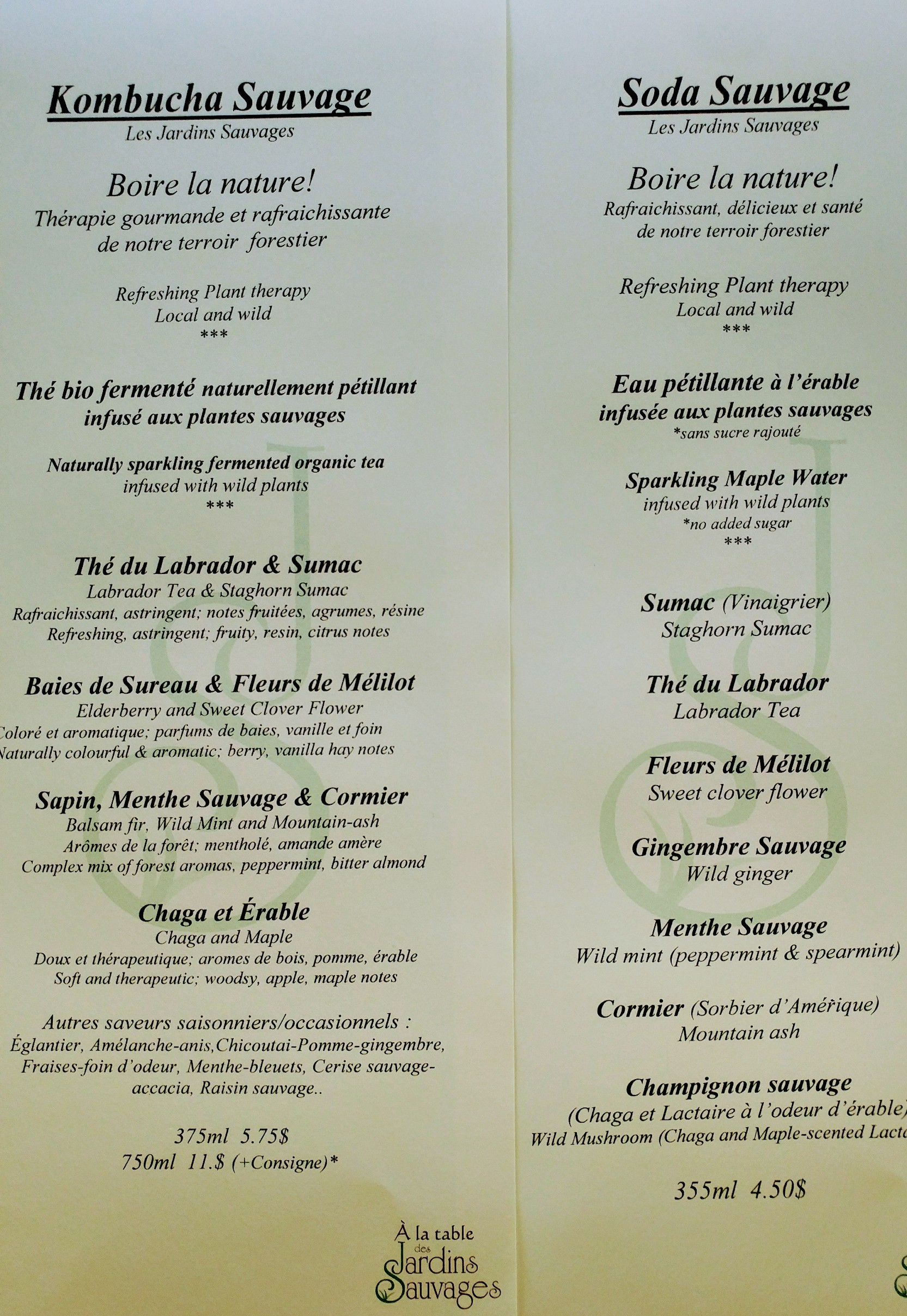
The crowd favourite seemed to alternate by the week at the market, but now has settled on the Balsam Fir, Wild Mint and Mountain Ash. It is the most complex, like a walk through the forest. ‘The chicks’ seem to like the Elderberry-Sweet Clover Flower with its pretty colour and wild vanilla-like grassy notes. We also have many seasonal flavours that we serve by the glass (Kombucha du Jour) at the market like Strawberry-Sweetgrass, Black Raspberry-Anise, Wild Mint-Wild Blueberry, Cloudberry-Apple-Ginger, etc.. http://jardinssauvages.com/index2.php?nom=Kombucha_Soda
Good stuff.
It is not hard to make at home for your personal consumption, if you’ve got some SCOBY *(Mother) and are on top of it. (*A symbiosis of good bacteria and yeasts that turn the sugar /alcohol into acetic acid, among other organic acids)
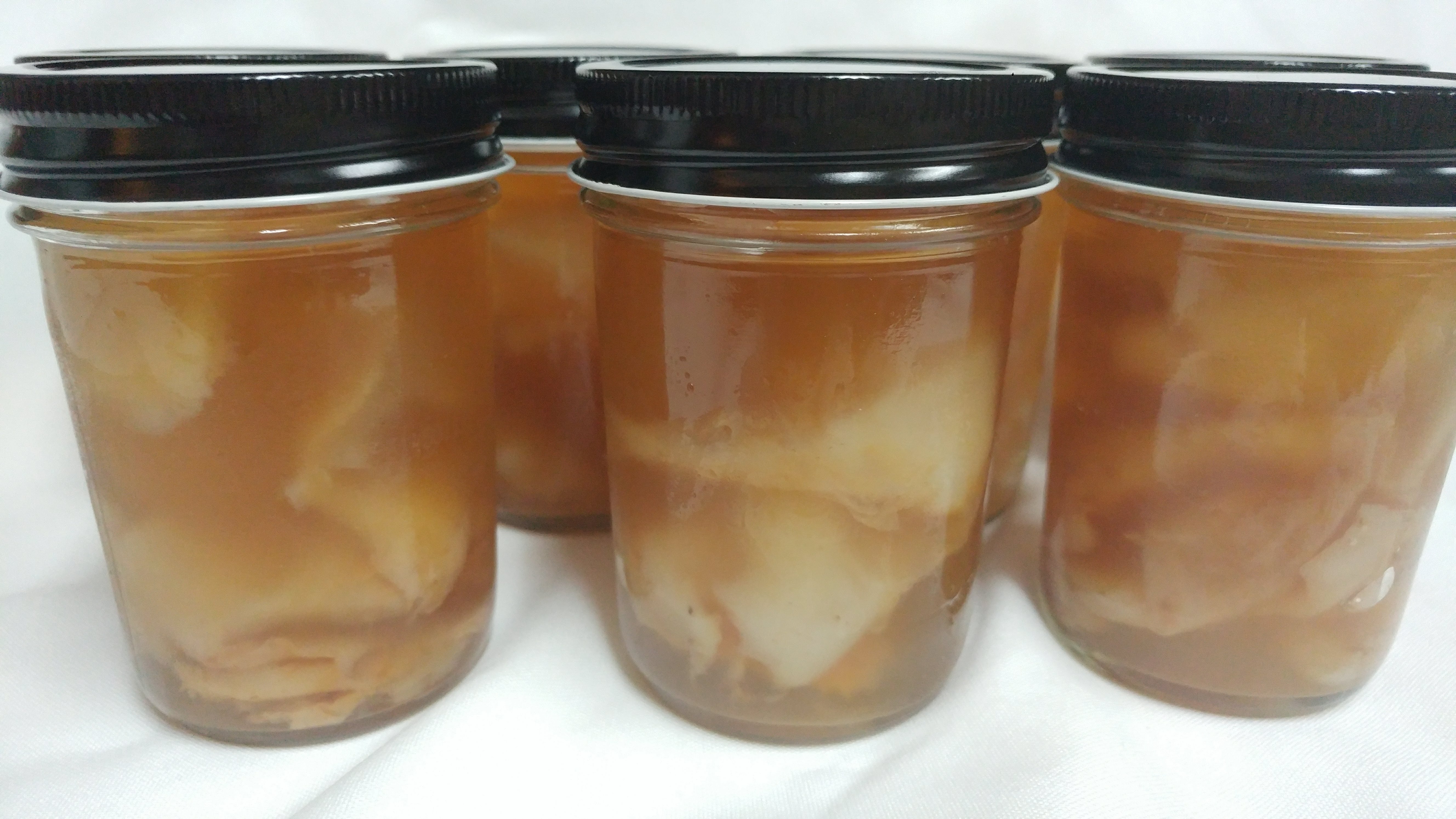
Of course, as I soon discovered, brewing booch at home is one thing, doing it on a larger scale and commercially is whole different game. Achieving a regular, consistent and stable product while remaining artisanal, favouring a top-quality and healthy alive product is a challenge. I learnt a lot in the past year growing slowly, organically, tinkering with all the parameters, doing everything on my own from the recipes to the heavy lifting, methodology, logistical troubleshooting, adjusting variables, tweaking... Alongside my reliable refractometer, I have two Ph-o-meters, but my tongue is the best. All to say, I’m humbly quite pleased with my progress and my line.
As I’m rolling in hundreds of liters and not thousands or hundreds of thousands, my operation is still way small relative to the commercial booch, and we are not distributed - only sold at our store (Jean Talon Market, Mtl), our country table in St-Roch de l’Achigan and on order, for a select few restaurants with a local menu/beverage program, like the Monkland Tavern in NDG ..
At a crossroads, I’m unsure what the next step should be, as I’m maxed out with my current set-up. I could take on a couple of clients, that's it. My plan. We’ll see what the future holds for my Kombucha Sauvage.. I am taking a commercial class on big-scale brewing to enlighten me before further investment.
Who’s kidding who, I am a chef first and quite like it that way. I kind of want to keep up this beat, with my brewing as a sideline, but I can’t help but be excited about the possibilities. But it’s not like I can go BIG anyhow; it must remain artisanal as it is made with REAL, WILD, SUSTAINABLY hand harvested plants and berries, ie. Can not be mass produced. Which is what makes it so special – delicious and therapeutic! Not to mention expensive.. That's why I think it's meant to be just for this scale and a handful of clients with the right clientele - who are ready to pay for something special, like a glass of wine.. A suivre!
One thing for sure, for now, I need to focus on the wild mushrooms and the rest of our business as it is fall, our busiest season. Already!
It’s been a beautiful, yet very dry summer, and so a slow start to the mushroom season; we’re like a month behind, yikes!
Normally by now, I’m several hundreds of pounds into my putting up, not twenty (out of an average of 2 tons/year on average!). Besides some chanterelles and Lobster, a smattering of this and that: a few boletes and milkcaps, not much going on. No puffballs, porcini or hen of the woods to speak of, the stars of late summer/fall.
However, with the recent rainfall, nice days and cool nights, it just might explode. Fingers crossed! A few inspiring photos from last year on our facebook page and this year's menu
https://www.facebook.com/JardinsSauvages17/
The reservations are coming in for our annual mushroom fest, so it will be a mad dash as usual, weehoo.. http://soupnancy.squarespace.com/wild-mushroom-event-october/
Always a tad stressful, yes, but I do love this dance with nature. And everything about the seasons.. How delicious is life now? Not just talking wild things here - the peaches, the corn etc! Yum. It's hard to not want to celebrate these gorgeous days, the glorious harvest season, and all that we are so lucky to have..
Foremost, here’s to Mother Nature, our dance partner throughout the seasons, and the marvelous bounty she offers up for our food and drink, not to mention in sights and sounds; the moon, the cricket/birdsong and the whole shebang.
Cheers!
Happy Mushroom season to us! Let the season of the dirty fingernails begin..
